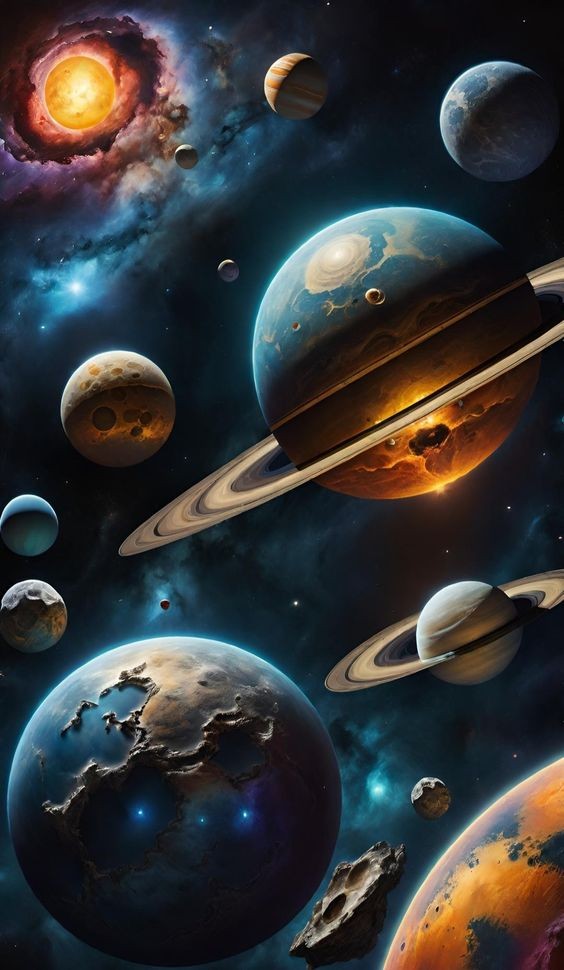Discovering the Wonders of Our Solar System
The solar system is a vast and captivating expanse filled with diverse celestial bodies, each offering unique insights into the universe we inhabit. From the blazing sun at its center to the icy reaches of distant dwarf planets, our solar system is a treasure trove of wonders waiting to be explored. This article takes you on a journey through the fascinating components of our solar system, highlighting the beauty and complexity of our cosmic neighborhood.
The Sun: The Heart of Our Solar System
At the core of our solar system lies the Sun, a massive star that provides light and heat essential for life on Earth. Composed mainly of hydrogen and helium, the Sun is about 93 million miles away from us and contains over 99% of the solar system's total mass. Its immense gravitational pull keeps the planets in orbit, making it the cornerstone of our celestial family.
Fun Facts About the Sun:
Surface Temperature: Approximately 10,000°F (5,500°C).
Solar Flares: Powerful bursts of energy that can affect communication on Earth.
The Inner Planets: Mercury, Venus, Earth, and Mars
Mercury
Mercury, the closest planet to the Sun, is known for its extreme temperature variations and cratered surface. It’s a small, rocky planet with a diameter of about 3,000 miles.
Venus
Often called Earth's "sister planet," Venus has a thick, toxic atmosphere and is the hottest planet in our solar system. Its surface is covered with volcanoes and has a stunning golden hue.
Earth
Home to millions of species, Earth is unique for its liquid water and life-sustaining atmosphere. It orbits in the "Goldilocks Zone," which is just right for supporting life.
Mars
Known as the "Red Planet," Mars has captured the imagination of scientists and the public alike. With its rocky surface, massive volcanoes, and evidence of past water, Mars is a prime candidate for future exploration.
The Asteroid Belt: A Cosmic Frontier
Between the inner and outer planets lies the Asteroid Belt, a region filled with rocky remnants from the early solar system. This belt contains millions of asteroids of varying sizes and compositions, providing valuable insights into the formation of planets.
The Outer Planets: Gas Giants and Ice Giants
Jupiter
As the largest planet in our solar system, Jupiter is a gas giant known for its Great Red Spot—a massive storm that has been raging for centuries. With over 79 moons, including the intriguing Europa, Jupiter is a focus of scientific research.
Saturn
Famous for its stunning rings, Saturn is another gas giant. Its rings are composed of ice and rock particles, and it boasts more than 80 moons, including Titan, which has a dense atmosphere and lakes of liquid methane.
Uranus
Uranus stands out as an ice giant with a unique tilt, resulting in extreme seasonal variations. Its bluish hue comes from methane in its atmosphere, and it has 27 known moons, each with its distinct characteristics.
Neptune
The farthest planet from the Sun, Neptune, is known for its deep blue color and strong winds. Its atmosphere features the Great Dark Spot, a storm similar to Jupiter's, and it has several moons, including Triton, which may harbor subsurface oceans.
Dwarf Planets and Beyond
Beyond Neptune lies the Kuiper Belt, home to dwarf planets like Pluto, Eris, and Haumea. These icy bodies provide essential clues about the early solar system and its formation processes.
Exploring the Kuiper Belt
The Kuiper Belt is an expansive region filled with icy objects. Dwarf planets like Pluto offer a glimpse into the solar system's history and the diversity of celestial bodies.
The Future of Solar System Exploration
With advancements in technology, missions like NASA's Perseverance rover on Mars and the James Webb Space Telescope are paving the way for groundbreaking discoveries. Future missions aim to explore the icy moons of Jupiter and Saturn, searching for signs of life beyond Earth.
Conclusion
Discovering the wonders of our solar system reveals a beautiful tapestry of beauty, diversity, and complexity. From the blazing sun to the icy reaches of distant dwarf planets, each element contributes to the fascinating narrative of our cosmic neighborhood. As we continue to explore and learn, the mysteries of the solar system beckon, inspiring future generations of astronomers and space enthusiasts alike. The journey of discovery is just beginning, and the universe has so much more to offer.






